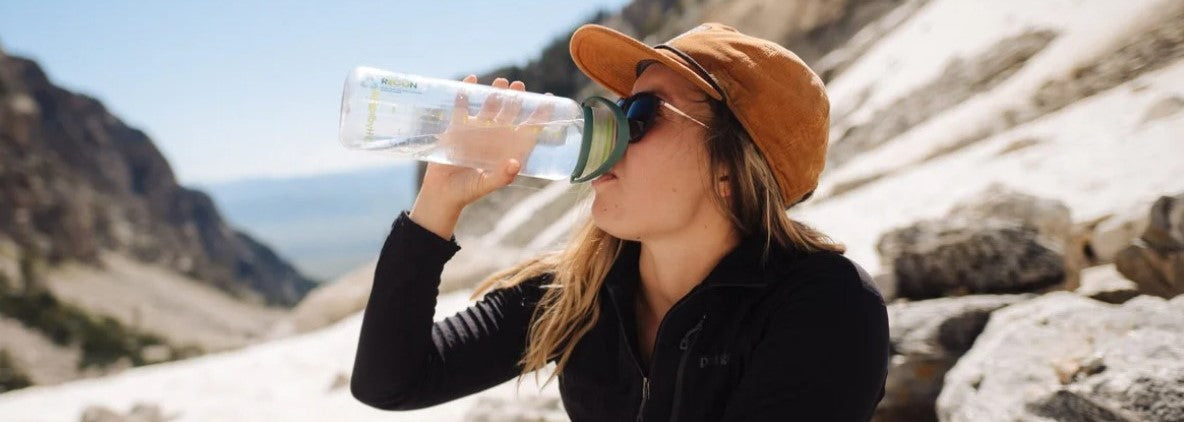When it comes to hydration, most of us simply reach for a bottle of water when we’re thirsty, without giving much thought to its temperature. But how well does your body absorb it at different temperatures? HydraPak Australia explores the relationship between water temperature and hydration, helping you better understand how to optimise your fluid intake for maximum benefit.
1. Cold Water: A Refreshing Boost
Cold water is often seen as the ultimate thirst-quencher, especially on a hot day or after a workout. When your body temperature rises, either due to exercise or environmental heat, your body needs to cool down to maintain homeostasis. Cold water can provide that cooling effect, making it feel more refreshing and helping to lower your body temperature more effectively.
For active individuals, drinking cold water after exercise can be particularly beneficial. It can help rehydrate the body more quickly and replenish fluids lost through sweat. Cold water may also encourage you to drink more, as it tends to be more appetising, especially in warm conditions.
However, cold water does come with some potential drawbacks. Drinking very cold water too quickly can sometimes cause stomach discomfort or cramps for some individuals. This is why it’s recommended to sip cold water slowly after intense physical activity.
2. Room Temperature Water: Gentle and Easily Absorbed
Room temperature water (around 20°C) is often considered one of the best choices for hydration. It’s gentle on the digestive system, easier to absorb, and less likely to cause discomfort than cold water. If you're drinking water throughout the day to maintain hydration levels, room temperature water is an excellent option.
In fact, some studies suggest that the body may absorb room temperature water slightly more efficiently than cold water. The body doesn't need to expend energy to warm up the water, which can lead to faster absorption, especially if you’re drinking a large amount of water at once.
3. Warm Water: Soothing and Therapeutic
Warm water, typically heated to around 40°C, is often associated with calming or therapeutic properties. Drinking warm water can aid digestion, relax muscles, and promote overall comfort. In traditional medicine, such as Ayurvedic and Chinese practices, warm water is believed to help balance the body's internal systems.
For hydration purposes, warm water doesn’t necessarily offer significant advantages over cold or room temperature water, but it can have a soothing effect, especially when consumed slowly. It’s particularly beneficial in the morning, as warm water can help kickstart the digestive process and relieve any discomfort or bloating.
4. Does Water Temperature Affect Hydration During Exercise?
When exercising, it’s important to consider how your body responds to different water temperatures. In warm weather or after an intense workout, cold water can be more effective for cooling the body down and encouraging you to drink more frequently. However, in cooler conditions, room temperature water might be a better choice to avoid shock to your system.
Hydration strategies vary based on the type and intensity of exercise, but a good rule of thumb is to drink water that feels comfortable to you. During long endurance activities or when spending time outdoors, a well-insulated HydraPak bottle can keep your water at the desired temperature for longer, ensuring you stay hydrated and refreshed.
5. The Best Water Temperature for Your Personal Preferences
Ultimately, the best water temperature for hydration depends on personal preference and the situation at hand. Here’s a quick guide:
- Cold Water: Great for quick refreshment, cooling down, and post-exercise hydration.
- Room Temperature Water: Ideal for consistent hydration throughout the day, gentle on the digestive system, and more easily absorbed.
- Warm Water: Perfect for soothing digestion, promoting relaxation, and comforting your body during colder weather.
Conclusion: Hydration Is Key, No Matter the Temperature
When it comes to staying hydrated, the most important thing is to drink enough water, no matter the temperature. Whether you prefer cold, room temperature, or warm water, all three options can effectively hydrate your body. The key is to listen to your body, choose the temperature that feels best for you, and stay consistent in your hydration efforts.
For active travellers and adventurers, HydraPak bottles and bladders ensure that your hydration remains efficient, convenient, and temperature-controlled, allowing you to stay refreshed and ready for whatever comes next.
Stay hydrated, stay comfortable, and enjoy your adventure with HydraPak Australia!

